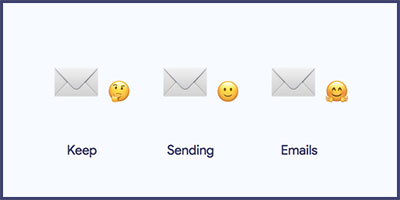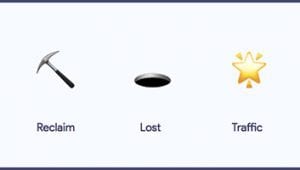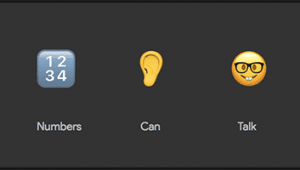Nurturing Emails: How to Create a Newsletter That *Truly* Drives Results
✉️ ?
Keep
✉️ ?
Sending
✉️ ?
Emails
This may sound weird considering the label of the link you’ve just clicked, but you may not need a newsletter.
Newsletters are hard to automate, and they’re a lot of work.
Sending newsletters means writing copy, curating content, and managing subscribers every day / week / month depending on the frequency you selected.
If you’re not already creating news or content, it also means adding content creation to your workflow.
Although you may not need a newsletter, what you do need are lead nurturing emails.
You did the hard work of attracting leads, you got them to signup, you sent them a welcome email, and they might have got your onboarding emails.
Unfortunately, if you’re not following up after all that, they’ll move on to other things, or straight up forget about you. More so, if you don’t nurture your leads, they won’t know who you are (because you didn’t build a relationship), and they’ll unsubscribe, or worst, mark your emails as spam. ?
In this post, we talk about creating nurturing emails that perform, newsletters or not.
Defining the Goal of your Nurturing Emails
Marketers tend to default to newsletters as a mean of engaging with leads and prospects. Although newsletters can be the right solution, they can also be very costly in terms of time investment.
To make sure that you’re building the right nurturing emails, it’s a good idea to start from your objective. Are your nurturing emails meant to:
- Build up to a sale?
- Increase product usage and engagement?
- Create brand awareness?
- Create customer advocacy?
- Something else?
The goal should dictate the type of emails you’re sending.
So, ask yourself: What’s the main objective? When do prospects qualify to receive this nurturing sequence? Are those prospects part of the same profile, or do they have different characteristics?
Nurturing Emails are But a Step in the Customer Journey
Marketing automation is a blessing when it comes to nurturing leads and clients. It makes it easy to have different start points, goals and conditions for each of your nurturing sequences. It also makes it easy to use data for personalization.
Although it’s perfectly acceptable to begin with a single nurturing sequence, as your business matures and the model becomes more predictable, you’ll definitely want to segment your nurturing emails.
As an example, at LANDR (a SaaS product), where Ludo and I used to work, we had:
- A sequence for blog subscribers (End goal: Account Creation);
- One for feature expansion (End goal: Engagement);
- A behavior correction sequence (End goal: User Activation);
- A paid subscriber newsletter (End goal: Retention);
- Post-cancellation followup sequences (End goal: Re-purchase);
- A reengagement sequence (End goal: Reactivation).
This may seem like a lot, but all those sequences were driving users to important business goals. With clear goals for each sequences, it was easy to optimize email sequences.
The ? Train Track Approach to Nurturing Emails
The right way to look at nurturing sequences is to imagine a railroad system…
You have users coming in at different stations (stages) ?, and those users may or may not be headed to the same destinations (business goals), but they can only be in one train (email nurturing sequence) at a time.
Looking at it this way helps:
- Keep things clean by avoiding overlaps and double sendouts;
- Stay on top of performance and track progress;
- Track the transition between one train track and another.
At LANDR, users were beginning their customer journeys by receiving our onboarding sequence. Depending on whether they were activating or purchasing the product, they were joining:
- Our feature expansion sequence;
- Our behavior correction sequence;
OR - Our paid subscriber newsletter.
Afterwards, if they cancelled they were put on a different path, and we were using the general newsletter as a fallback.
How to Create Nurturing Emails That Drive Results
Once you know what the goal of your sequence is, you’ll want to home in on your story arch to identify key steps leading to the goal.
Thinking through the story through your customer’s eyes, but with your goal in mind will help you find the appropriate format.
On this blog, we previously did teardowns of Drift, Hotjar, InVision, and MailChimp‘s email marketing.
Although their businesses have a lot in common (they sell Software-as-a-Service to businesses and have transactional freemium models), and the goal of their nurturing emails is similar (get users to engage with the product and upgrade), their approaches are fairly differently:
Drift
Drift uses marketing campaigns and feature release emails to nurture leads. They don’t have a newsletter.

Hotjar
Hotjar also uses feature release emails for nurturing. For their blog however, they use a series of newsletters.

InVision
InVision sends very elaborate content newsletters. They also send feature launch emails.

MailChimp
Lastly, MailChimp uses a mix of feature launches, a realllllly long onboarding sequence, and case studies.

There are many ways to reach an objective. The important thing is to make sure that your nurturing emails build off of each other, and that they drive behavior towards the end goal.
Things to Consider When Creating Your Nurturing Emails
Beyond your campaign goal and the general structure of your nurturing sequence, you’ll want to think about:
- Segmentation: How are leads becoming qualified for this nurturing sequence? How do they exit the sequence? What kind of personalization can you use to create more proximity?
- Length: How many emails do you intend to send? For how long do you plan to keep sending emails?
- Frequency: How much time do you put between emails? Can you reach the goal faster by increasing the frequency? Note: Sometimes you can! ?
- Template: Should you use your regular template? Would it make sense to change the email template to give your nurturing emails a different look & feel? It’s often a good idea to change templates to differentiate email sequences.
- Communication Channels: Do you send InApp or Push notifications? Do you only send emails? Can all of these channels work together?
- Sender’s Identity: From whom are you sending these emails? Are they sent from the company or from an employee’s personal account? Can you gain credibility by making a key person in the organization the sender? Can you make it feel more personal by sending it from support or from a subject matter expert?
- Micro-Goals: Beyond your over-arching campaign goal, what are each individual emails’ micro-goals? How will you know whether the specific communications were successful in driving leads to the end goal?
Open rates and click rates are really useful to help assess the effectiveness of your emails, but micro-goals are what can help you understand whether the specific email is driving leads to the end result you seek.
With Highlights, you can easily monitor the real performance of your emails.
Should it be a Newsletter?
To scale your nurturing emails and reach your goals, you’ll want to make good use of automation.
Because of their dependence on content and the inconsistencies in content performance, newsletters are among the most difficult emails to scale and automate.
It’s definitely not impossible – Product Hunt does this really well – but to make it work, you’ll need to ensure that the news and content you include in your emails drive the behavior you seek.
You’ll also want to use the body copy and template layout of your emails to tell a story that drives leads to convert.
No matter what you do, don’t default to a newsletter. Consider your goal, browse through Really Good Emails for inspiration, and find the best model to reach your goal. Doing this will ensure that your nurturing emails perform.
Interested in building your own nurturing sequence?
We just launched a SaaS Email Masterclass ? to help increase trial conversions with email.





Trackbacks & Pingbacks
[…] them to the solution, to the homepage, to the signup flow, to the first-time user experience, to your retention re-engagement emails, etc are all going to, hopefully, be a thoughtful consistent clear, you know mental movie of the […]
[…] to send newsletters, onboarding emails, promos, and whatever else fits that original […]
[…] to Mail Tester’s email address, and the tool calculates your spam score. Although they focus on newsletters, Mail Tester will work with any types of […]
[…] share your content than casual blog visitors. You can send an email every time you publish a post, include your posts in a newsletter or have an automated RSS campaign send emails to your subscriber […]
Leave a Reply
Want to join the discussion?Feel free to contribute!